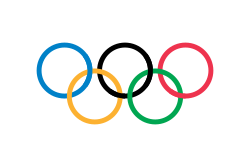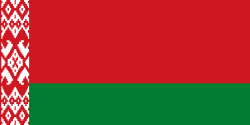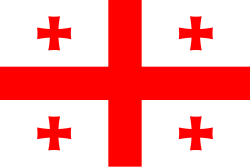Aleksandr Kurlovitj
| Aleksandr Kurlovitj | ||
| Tyngdlyftning, herrar | ||
| Nation: | ||
|---|---|---|
| Nation: | ||
| Nation: | ||
| Guld | Barcelona 1992 | +110 kg |
| Guld | Seoul 1988 | +110 kg |
| Världsmästerskap | ||
| Guld | Istanbul 1994 | +108 kg |
| Guld | Donaueschingen 1991 | +110 kg |
| Guld | Aten 1989 | +110 kg |
| Guld | Ostrava 1987 | +110 kg |
| Silver | Moskva 1983 | +110 kg |
| Europamästerskap | ||
| Guld | Ålborg 1990 | +110 kg |
| Guld | Aten 1989 | +110 kg |
| Silver | Moskva 1983 | +110 kg |
Aleksandr Nikolajevitj Kurlovitj (ryska: Александр Николаевич Курлович), född 28 juli 1961 i Hrodna i Vitryska SSR, död 6 april 2018 i Hrodna,[1] var en sovjetisk/vitrysk tyngdlyftare. Han vann två guldmedaljer i supertungvikt vid olympiska sommarspelen 1988 i Seoul och 1992 i Barcelona.[2][3]
Kurlovitj tog också fyra guldmedaljer i världsmästerskapen 1987, 1989, 1991 och 1994.[4] Han satte tolv världsrekord mellan 1983 och 1994 och blev 2006 invald i det internationella tyngdlyftningsförbundets Hall of Fame.[5][6]
Källor
- ^ Ушел титан. В Гродно скончался знаменитый тяжелоатлет Александр Курлович (ryska)
- ^ Aleksandr Kurlovich Bio, Stats, and Results. Arkiverad 17 april 2020 hämtat från the Wayback Machine. Sports Reference. Läst 13 november 2017.
- ^ Alexander KURLOVICH - Olympic Weightlifting - Belarus. Internationella olympiska kommittén. Läst 13 november 2017.
- ^ Weightlifting Database. Kurlovich Alexander. International Weightlifting Results Project. Läst 13 november 2017.
- ^ Alexander Kurlovich @ Lift Up Hall of Fame. Lift Up. Läst 13 november 2017.
- ^ Weightlifting Hall Of Fame - List Of Members. International Weightlifting Federation. Läst 13 november 2017.
| |||||||||||||||
Media som används på denna webbplats
Olympic Movement flag
Proportions 2:3, created 1913, adopted 1914, first used 1920.
- Colors as per http://fairspielen.de/wp-content/uploads/2015/09/Annexe-3-Olympism_and_the_Olympic_Symbol_-_Principles_and_Usages_Guide-1.pdf
- blue: PMS 3005C
- yellow: PMS 137C
- black: PMS 426C
- green: PMS 355C
- red: PMS 192C
- Dimensions of the rings taken from http://fairspielen.de/wp-content/uploads/2015/09/Annexe-3-Olympism_and_the_Olympic_Symbol_-_Principles_and_Usages_Guide-1.pdf
De olympiska ringarna, med genomskinlig bakgrund.
Flag of Iran. The tricolor flag was introduced in 1906, but after the Islamic Revolution of 1979 the Arabic words 'Allahu akbar' ('God is great'), written in the Kufic script of the Qur'an and repeated 22 times, were added to the red and green strips where they border the white central strip and in the middle is the emblem of Iran (which is a stylized Persian alphabet of the Arabic word Allah ("God")).
The official ISIRI standard (translation at FotW) gives two slightly different methods of construction for the flag: a compass-and-straightedge construction used for File:Flag of Iran (official).svg, and a "simplified" construction sheet with rational numbers used for this file.








